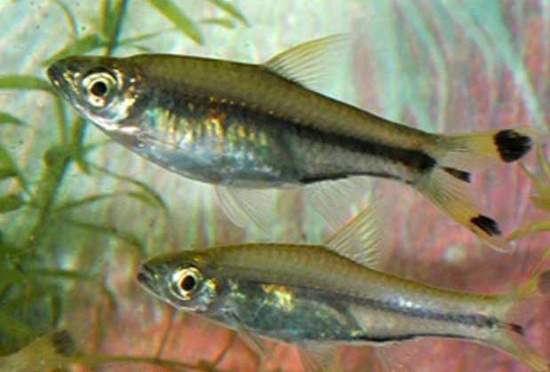Successful farming of striped fish
More than 150 indigenous fish species include the striped grouper (Rasbora trilineata), the rock heart (Rasbora paviana) lia thia (Betta splendens) which has just been released to Nhieu Loc canal (near the Dien Bien Phu 2 bridge, Binh Thanh district). ) as part of the program 'Breeding and releasing native fish to nature' at the Wildlife Protection Office (WAR) office since February 2010.

The fish are striped (upper) and male (below).
In this release, an additional native fish species is the plankton (photo) with more than 50 individuals successfully propagated and released to nature. Fish in striped plots are distributed mainly in the South, living popularly in the slow water environment such as ponds, marshes, and rivers. Their favorite food is small insects, especially mosquito larvae. This species also feeds on organic substances, helping to clean up organic waste from domestic wastewater.
Under the technical assistance of WAR, nearly 20 members of Operation 350 of Vietnam participated in stocking fish to contribute to restoring indigenous fish populations in the city and encouraging local people to use native fish for ornamental purposes. .
To date, more than 1,300 individuals of four indigenous fish species, including lilies, rock tongs, betel nut, and striped hearts have been released to the tributaries of the Saigon River.
- Quang Binh: Successful farming of lentils in land ponds
- Model of fish farming combined with hydroponic vegetable cultivation
- Just grow vegetables and fish
- Can Tho farmer called ten thousand snakehead fish dancing on the water
- Study on pathogens in cold water fish
- Unexpected facts about ornamental fish
- 'Living wonders' in the Spratly Sea (1)
- Use industrial feed for commercial snakehead fish
- Interesting discovery about the strategy of maintaining the breed of horse striped fish
- Separation system of industrial catfish pond waste
- Growing coffee and raising fish in a closed system
- 10 species of fish set the fastest swimming record in the world
 'Barefoot engineer' invents a pipeless pump
'Barefoot engineer' invents a pipeless pump Process of handling dead pigs due to disease
Process of handling dead pigs due to disease Radiometer
Radiometer Warp Engine: Technology brings us closer to the speed of light
Warp Engine: Technology brings us closer to the speed of light